Dom Minasi, guitarist/composer/educator
"No one I studied with taught me how to play jazz. That I taught myself."

Dom Minasi has been playing guitar for over 50 years. He became a professional musician playing jazz when he was 15 years old. In 1962 he started teaching and working as a full–time musician. More than time to talk to him.
You were born March 6, 1943 (the same birth date as Wes Montgomery), in New York City. Did you grow up in a musical family? What music did you hear as a youngster?
I didn’t grow up in a musical family. The only music I heard was on the radio, TV, movies and records.

7 years old with his first guitar, 1950
Was the guitar your first instrument? What triggered you to learn and play it.
Guitar was and is my first instrument. Believe it or not, watching cowboy movies like Roy Rogers or Gene Autry play guitar triggered my appetite to play and when I was about 4 years old we went to visit an older second cousin who took out a guitar and played a few chords. From that moment on I begged my father to get me a guitar. Finally, when I was seven years old he got me one for Christmas.
Who were your main influences?
My main influences when I was young (around 14) were Johnny Smith, Les Paul and a little later on it became Wes Montgomery, Sal Salvador, Mundel Lowe, Jimmy Raney, Kenny Burrell, Barney Kessel, Tal Farlow, Les Spann, Chuck Wayne, Billy Bean and Jim Hall.
But when I got to around eighteen I stopped listening to guitarists and began listening to Miles Davis, Monk, Coltrane, Eric Dolphy, Stan Getz, Wayne Shorter, Horace Silver, Bill Evans and a whole slew of other great players.
What studies did you get?
I don’t remember my first guitar teacher’s name. All I remember was his first name was Jerry and that he was awful. After 2 years my father sent me to a man by the name of Joe Genelli. I studied with Joe till I was fourteen and then on to Sal Salvador on and off for about four years and a guitarist by the name of Dan Duffy who introduced me to simple chord substitution. When I was 24 I took six lessons with Jim Hall. No one I studied with taught me how to play jazz. That I taught myself.
Did you have the opportunity to hear musicians live? Who impressed you the most?
Yes, I did. After my father took me to hear Johnny Smith at Birdland, I became a regular there. I watched and heard every jazz master you could think of including the famous Miles Davis Quintet with John Coltrane, Horace Silver, Cannonball Alderley and later on I started going to the Village Vanguard and the Five Spot where I saw Monk.
When did you decide to make a living from playing and composing music?
I knew when I was fourteen that’s what I wanted to do the rest of my life. I had my union card when I was fifteen and became a full-time musician when I was nineteen.

What music did you play from 1964 until 1973?
I played all kinds of music. Jazz , pop, rock . I played shows and record dates. Anything that would help me make a living.
You released two records on Blue Note: "When Joanna Loved Me " (1974) and "I Have the Feeling I've Been Here Before" (1975). Who else played on them? How did you get on that legendary label?
I had played a jazz concert and journalist, Louis McMillan was there. He wrote an article about me and suggested that I should be recording. He said he had a friend at Blue Note and I should call him. I did and he told me to make a demo. I used drummer, Bruce Pace and bassist, Tony Kessler and we recorded With A Little Help from My Friends, a swing version of Tenderly where I modulated into a different key with each sixteen bars and the ballad When Joanna Loved Me. I gave it to Chris Brown and waited. It took two years for George Butler to say yes and another year to get into the studio and another year for it to be released. A little side story: While waiting to speak to George Butler, I could hear my demo being played. A few minutes later Horace Silver came out of George’s office, walked up to, shook my hand and told me how much he enjoyed my playing. What a thrill! The musicians on that album were, Gary Newman (bass), Bud Really (drums), Joe Dadiego (percussion). Wade Marcus produced it and Gene Bianco contracted the strings section and Wade wrote the string arrangements.
My second album, I Have the Feeling I’ve Been Here Before was produced by Byron Olsen. Byron hired Roger Kelloway to record and write some original music. The band was so big I didn’t have a chance to meet everyone.
I read somewhere that after these two albums you dropped out of the recording scene. How come?
I dropped out as a leader. The business part was too much for me. It wasn’t about the music. It was more about the sales.
What activities were you involved in then? Did you teach?
I have always taught and I wrote three books on harmony and improvisation. I began writing the music for off Broadway and I took all kinds of gigs, recordings, shows, weddings etc. Whatever I could do to make a living.

Soup shot at Memorial for BernNix
In 1996 you played on the LEO Records release “Elements” as member of the Michael Jefry Stevens/Dominic Duval Quintet. Originally it was not meant to be a disc. Were you happy with the release? I’m asking because I read somewhere you weren’t able to hear yourself playing.
It’s true I could hardly hear myself during the recording and during the mix I insisted that they bring up the guitar so I could tell if I was happy with what I played. Fortunately, I was.
In his liner notes for “Elements” Russ Summers found that the closest reference of your style would be James Emery. Can you agree with that?
No, I don’t agree with that. James is a great player and the only thing we have in common is we both have great technique. Otherwise we are totally different from each other.
I adore your warm guitar sound. Can you describe your tone?
Thank You. It took me years to get that sound and the right guitar.
What guitars do you play?
I have a few that I use. My main recording guitar is a custom-made Carlo Greco. It was an engagement gift from my wife Carol. Of course, it was made to my specifications. I also use an Eastman Archtop and a D’Acquisto Centura made to my specifications and most recently German Aprile made me a 15 inch semi hollow guitar which sounds great and I mostly use it on gigs in and around New York because it is easy to carry.
In 1999 you are on two CIMP releases: "Dom Minasi Trio – Finishing Touches" and "Blaise Siwula Trio – Dialing Privileges". Why did you choose for that label?
By 1995 I was back playing free form and avantgarde music. Jay Rosen suggested I make a demo and send to CIMP. I wasn’t interested but Jay kept at and I eventually made the demo and at the same time I was playing with Blaise Siwula and Blaise would record all the rehearsals and sent it on to CIMP. And it turns out that Bob Rusch decided to record me with my trio one week and the following week he recorded the trio with Blaise.
When did you and your wife, singer Carol Mennie, start your own label CDM? With what purpose?
After the CIMP recording came out, Carol and I did some research and we decided to open our own record company in 2001. This way we would have control over everything.

with Blaise Siwula
You recorded a few times with saxophonist Blaise Siwula. Tell me more about him. How did you meet?
I was principle composer for a group called DDT (Dominic Duval (bass), Dom Minasi and Tomas Ulrich on cello). We were performing at the Knitting Factory with a double trio. Blaise was in the audience. After the performance Blaise introduced himself and we started playing together and we have been together since 1996 (24 years).
You recorded - and released it as “Takin’ The Duke Out” (CDM Records 1001, 2001) - a trio concert with Ken Filiano (double bass) and Jackson Krall (drummer from Cecil Taylor) at The Knitting Factory, NYC, on April 23, 2001. All compositions you played were from Duke Ellington plus Take the A Train from Billy Strayhorn. You must have been impressed by the music of Duke Ellington. How were the reactions of the public on your “Tayloresque” (dixit Marc Chénard in CODA from 09-10/2006) approach?
Actually, I thought that record would do me in, but it became the record that put me on the map and to this day it is still my biggest seller.
On your “Goin’ Out Again” album (CDM Records 1002, 2002) you play again with Ken and Jackson, a dream team to my humble opinion. The music is a mix of standards and five of your originals but played with this adventurous touch. Please tell something more about the way you choose the music and arrange things. I guess a lot is improvisation.
My idea of standards is to re-harmonize with lots of improv. With my tunes the melodies and chords speak for themselves. It’s important to me to blend the improv in a way that it has an outside sound and yet we are playing in time.
One of my favorite albums is “Time Will Tell”. I like the use of both cello and double bass. Can you tell me a little more about how this project started?
This group was originally a trio playing through composed music. Tomas Ulrich on cello and Dominic Duval on bass. Dominic left the group to go play with Cecil Taylor and the music lay dormant for a few years. When Ken Filiano became part of my trio I asked him if he would be interested in becoming part of DDT and of course he did.
DDT along with drums became the backup band for my wife Carol Mennie. I wanted to slowly introduce her to the public and I thought it would be a good idea to put her on this recording for just one tune. From DDT sprung The Dom Minasi String Quartet which recorded Dissonance Makes the Heart Grow Fonder.
Another one of my favorites, although it took a couple of listening’s before I got into it, is the ambitious concept project “The Vampire’s Revenge” with an impressive range of musicians. Can you tell me more about it?
This was my dream project. I am a big Anne Rice fan. I started reading her Vampire series in the eighties. I always wanted to record a tribute to her. It took a lot of planning and composing and I wrote a short story to go along with it.

Can you tell a bit more on the story the album is based on and how did you choose the musicians?
I knew from the get-go this would be a big project involving a lot of musicians. I wanted musicians who could read and yet improvise freely. I picked the best I could find. Some turned it down because of the reading. I decided to use some small groups and one large group. The small groups would be quartets, quintets and sextets. I also needed a conductor to the big band and an actor for the recital piece.
I rehearsed the small groups at my apartment one Saturday. Every hour a different group would show up. The big group along with the conductor Byron Olsen (he produced my second album on Blue Note) had a 3-hour rehearsal at a large studio in Manhattan.
The small groups recorded the same way we rehearsed. Every hour a new group would show up to record. We recorded at the now defunct studio called the Studio in Soho. I also recorded some of the small compositions that would be added to a long piece later. Since I was playing a lot with Borah Bergman, we recorded a three-minute free improv piece.
The large group was recorded at Systems Two in Brooklyn, NY. We recognized from the beginning there would be a problem with transitions (reading to improv). We solved the problem by giving everyone headphones. After the improv sections Byron would say get ready for letter B and counted it off and it worked. Every piece was recorded in one take. Everyone left their egos at the door and it was an amazing group effort. Before we started I made an announcement that all that were here were handpicked and you are here to play. There are no limits on your solo. Just play!
In an article by Mark Chénard (CODA, 09-10/2006) I read you intended on recording more with Matthew Shipp and Borah Bergman. I don’t see that resulted in any CD’s. Of course, Borah sadly passed October 18th, 2012.
Yes, and Matthew went on to his own projects.
On “Quick Response” you work with an organ. How did this project see the light? Can you tell a bit more on the musicians and why you choose them?
I always wanted to record and organ group, but not your atypical blues group. I wanted some super arranged standards and originals. I asked around for an organist who could read and play modern changes and Kyle Kohler’s name came up. We had three rehearsals and recorded Quick Response. It is interesting that record got more radio play than any of my recordings, I made money of my ASCAP but in reality we sold less that 50 records. It is my worse selling album
Please tell us more about vocalist Carol Mennie and her album “I’m Not A Sometime Thing”.
I have always been a songwriter writing my own music and lyrics. When Carol and I started dating I would take her to jazz clubs and also to see some singers. She loved it. Since she was an actress she related to Broadway music. She wanted to learn how to become a jazz singer. I started working with her and I also sent her to Anne Marie Moss. After a year she was ready to perform in clubs, we started working around town in small venues. She sang a lot of my tunes including standards that I especially arranged for her in a duo and quartet setting. As I stated earlier I wanted to slowly introduce her to the public and I had her record ‘Round Midnight on my Time Will Tell album and a year later we recorded I’m Not A Sometime Thing.
In a Cadence interview (March 2007) I read you wrote over 300 compositions for children. Does this need a different approach?
Definitely. Children have to relate and be able to sing the songs . The lyrics and music have to be simple and something they can relate to.
On “Dissonance Makes the Heart Grow Fonder” (re:KonstruKt Records and later on the Konnex Records label we hear you on nylon string guitar. Who played in that band and why did you choose them? Can you tell a bit more about the compositions on this CD? Strange title.
The string quartet was an extension of DDT with Tomas Ulrich (cello) and Ken Filiano on bass. Since I had played a lot with Jason K Hong, I thought he would be perfect for the extra string in the group. Fortunately, I found a place where we could perform once a week and I started composing for the group and when it was time to record we were ready.
You recorded several duo albums with Karl Berger, Michael Jefry Stevens, Blaise Siwula, Hans Tammen, Chris Kelsey, Ras Moshe Burnett, Jack DeSalvo and Juampy Juarez. All are so different and yet they still match perfectly with your playing. Are all these albums totally improvised or are you writing music for them?
They were totally improvised and lots of fun to do.


The tribute to the great Cecil Taylor contains 4 improvisations. I know a couple of guitarists who name the pianist as one of their main influences. In what way did he influence you?
His rhythm and his stacking of chords on top of one another and of course his improv.
Are there plans for other projects now?
Yes. I just finished a recording called Eight Hands One Mind. It is a guitar quartet with me, Hans Tammen, Harvie Valdez and Brigan Krauss. All through composed music by me. Coming out on Unseen Records this Spring.
In April I am recording WIG (The Westside Improvisational Group). All original compositions by me with chord changes and in time.
Putting DDT back together with Tomas Ulrich and Dominic Duval Jr on bass. This will be a very special project which is a secret.
Thanks for the interview.
No Thank You
Text © Jos Demol - photos © courtesy Dom Minasi

Selected discography:
Dom Minasi – When Joanna Loved Me (Blue Note, 1974)
Dom Minasi – I Have The Feeling I've Been Here Before (Blue Note, 1975)
The Michael Jefry Stevens / Dominic Duval Quintet – Elements (LEO Records, 1996)
Blaise Siwula Trio – Dialing Privileges (CIMP, 1999)
Dom Minasi Trio - Finishing Touches (CIMP, 1999)
Blaise Siwula/Dom Minasi – Duet (Coma, 2000)
The Dom Minasi Trio – Takin' The Duke Out (CDM, 2001)
The Dom Minasi Trio – Goin' Out Again (CDM, 2002)
Dom Minasi – Quick Response (CDM, 2004)
Carol Mennie - I'm Not A Sometime Thing (CDM, 2004)
Dom Minasi's DDT+2 - Time Will Tell (CDM, 2004)
Dom Minasi – The Vampire's Revenge (CDM, 2005)
Blaise Siwula, Dom Minasi, Nobu Stowe & Ray Sage – New York Moments (KONNEX, 2007)
Joe Giardullo Open Ensemble – Red Morocco (ROGUEART, 2007)
The Jon Hemmersam/Dom Minasi Quartet featuring Ken Filiano and Kresten Osgood (CDM, 2007)
The Dom Minasi Septet - The Bird, The Girl and The Donkey II (UNSEEN RAIN Records, 2007)
Dom Minasi String Quartet – Dissonance Makes The Heart Grow Fonder (KONNEX, 2009)
The Dom Minasi Quintet - The Bird, The Girl and The Donkey (RE:KONSTRUCT, 2010)
Blaise Siwula/Dom Minasi - Live at The Matt Bevel Institute (RE:KONSTRUCT, 2010)
Dom Minasi – Looking Out Looking In (RE:KONSTRUCT, 2011)
Remi Alvarez Quartet Featuring Dom Minasi - Live at Vision Festival 2011 (RE:KONSTRUCT, 2011)
Karl Berger/Dom Minasi – Synchronicity (NACHT Records, 2012)
Dom Minasi/Michael Jefry Stevens - Angel Dance: Improvisations For Guitar And Piano (NACHT Records, 2013)
Blaise Siwula/Dom Minasi – The Sunshine Don't Mind My Singing (NACHT Records, 2014)
Dom Minasi/Hans Tammen - Alluvium (STRW2GOLD PICTURE, 2014)
Chris Kelsey/Dom Minasi - Duets NYC/Woodstock (TZAZZ KRYYK, 2015)
Ron Aprea - Pays Tribute To John Lennon (EARLY AUTUMN Productions, 2015)
Dom Minasi/Jack DeSalvo - Soldani Dieci Anni (UNSEEN RAIN Records, 2016)
Improvising Trio - Manna for Thought (self produced, 2018)
Dom Minasi/Juampy Juarez - Freeland (CIRKO Records, 2018)
Dom Minasi - Remembering Cecil (UNSEEN RAIN Records, 2019)
Dom Minasi/Ras Moshe/Blaise Siwula/Jay Rosen/Albey Balgochian - The Bird, The Girl And The Donkey (RE:KONSTRUCT Records Digital Download, 2020)
Other
In case you LIKE us, please click here:
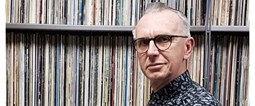
Foto © Leentje Arnouts
"WAGON JAZZ"
cycle d’interviews réalisées
par Georges Tonla Briquet

our partners:
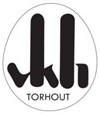


Hotel-Brasserie
Markt 2 - 8820 TORHOUT
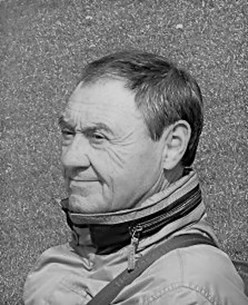
Silvère Mansis
(10.9.1944 - 22.4.2018)
foto © Dirck Brysse
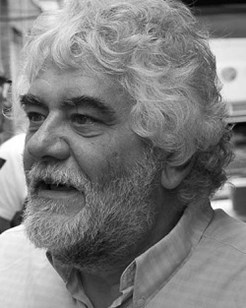
Rik Bevernage
(19.4.1954 - 6.3.2018)
foto © Stefe Jiroflée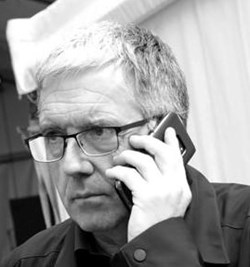
Philippe Schoonbrood
(24.5.1957-30.5.2020)
foto © Dominique Houcmant
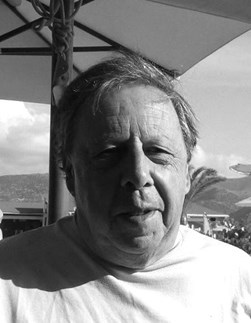
Claude Loxhay
(18/02/1947 – 02/11/2023)
foto © Marie Gilon
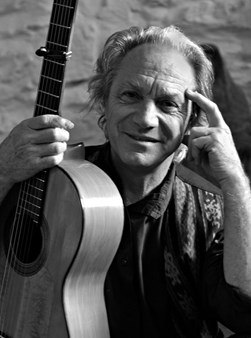
Pedro Soler
(08/06/1938 – 03/08/2024)
foto © Jacky Lepage
Special thanks to our photographers:
Petra Beckers
Ron Beenen
Annie Boedt
Klaas Boelen
Henning Bolte
Serge Braem
Cedric Craps
Luca A. d'Agostino
Christian Deblanc
Philippe De Cleen
Paul De Cloedt
Cindy De Kuyper
Koen Deleu
Ferdinand Dupuis-Panther
Anne Fishburn
Federico Garcia
Jeroen Goddemaer
Robert Hansenne
Serge Heimlich
Dominique Houcmant
Stefe Jiroflée
Herman Klaassen
Philippe Klein
Jos L. Knaepen
Tom Leentjes
Hugo Lefèvre
Jacky Lepage
Olivier Lestoquoit
Eric Malfait
Simas Martinonis
Nina Contini Melis
Anne Panther
France Paquay
Francesca Patella
Quentin Perot
Jean-Jacques Pussiau
Arnold Reyngoudt
Jean Schoubs
Willy Schuyten
Frank Tafuri
Jean-Pierre Tillaert
Tom Vanbesien
Jef Vandebroek
Geert Vandepoele
Guy Van de Poel
Cees van de Ven
Donata van de Ven
Harry van Kesteren
Geert Vanoverschelde
Roger Vantilt
Patrick Van Vlerken
Marie-Anne Ver Eecke
Karine Vergauwen
Frank Verlinden
Jan Vernieuwe
Anders Vranken
Didier Wagner
and to our writers:
Mischa Andriessen
Robin Arends
Marleen Arnouts
Werner Barth
José Bedeur
Henning Bolte
Erik Carrette
Danny De Bock
Denis Desassis
Pierre Dulieu
Ferdinand Dupuis-Panther
Federico Garcia
Paul Godderis
Stephen Godsall
Jean-Pierre Goffin
Claudy Jalet
Chris Joris
Bernard Lefèvre
Mathilde Löffler
Claude Loxhay
Ieva Pakalniškytė
Anne Panther
Etienne Payen
Quentin Perot
Jacques Prouvost
Renato Sclaunich
Yves « JB » Tassin
Herman te Loo
Eric Therer
Georges Tonla Briquet
Henri Vandenberghe
Peter Van De Vijvere
Iwein Van Malderen
Jan Van Stichel
Olivier Verhelst



